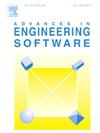利用增强时间序列数据的卷积长短期记忆识别桥梁结构损伤的两步法
IF 4
2区 工程技术
Q2 COMPUTER SCIENCE, INTERDISCIPLINARY APPLICATIONS
引用次数: 0
摘要
本文介绍了一种分两步识别桥梁结构损伤的新方法,该方法通过整合一维卷积神经网络(1DCNN)和长短期记忆(LSTM)网络,并利用符号聚合估计(SAX)的增强和转换技术对时间序列数据进行分析。第一步,通过增强技术对桥梁的时间序列数据进行多样化和量化,使模型更加稳健,并提高其泛化能力。之后,通过将连续时间序列转换为离散符号,实现 SAX,以减少数据量并对时间序列数据进行分类,从而减少数据量,提高训练效率。第二步,提出了结合 1DCNN 和 LSTM 的先进 DL 模型,以解决处理数据的损坏识别问题。通过利用 CNN 在特征提取方面的优势和 LSTM 在序列学习方面的优势,并结合先进的数据增强技术,我们的方法提供了一种稳健的解决方案,不仅能改进模型的训练过程,还能使其从更多样、更全面的数据集中学习,模拟不同的损坏情况,从而更准确地检测桥梁结构的损坏情况。我们使用从忠阳大桥结构中收集的时间序列数据对所提出的方法进行了验证。将所提方法的有效性与其他模型(如 1DCNN、LSTM 和 1DCNN-LSTM 组合模型)进行了比较。结果表明,所提出的 1DCNN-LSTM-SAX 在准确性方面优于其他方法,因此可广泛用于处理使用时间序列数据的桥梁损坏识别问题。本文章由计算机程序翻译,如有差异,请以英文原文为准。
A two-step approach for damage identification in bridge structure using convolutional Long Short-Term Memory with augmented time-series data
This paper presents a novel two-step approach to identifying structural damages in bridge structure through the integration of 1D Convolutional Neural Network (1DCNN) and Long Short-Term Memory (LSTM) networks, enhanced by the augmentation and transformation techniques using Symbolic Aggregate approXimation (SAX) for time-series data analysis. In the first step, the time-series data of the bridge is diversified and quantified by augmentation techniques to make the model more robust and increase its generalization capabilities. After that, SAX is implemented to reduce the volume and categorize time series data through the transformation of continuous time series into discrete symbols, thereby decreasing the size of the data for more efficient training performance. In the second step, an advanced DL model combining 1DCNN and LSTM is proposed to tackle the damage identification problems of the processed data. By leveraging the strengths of CNNs in feature extraction and LSTMs in sequence learning, combined with advanced techniques for data augmentation, our methodology offers a robust solution not only for improving the model's training process but also for enabling it to learn from a more diverse and comprehensive dataset that mimics different damage scenarios, allowing more accurate detection of damages within bridge structures. Validation of the proposed method is conducted using time-series data collected from Chuong Duong Bridge structure. The effectiveness of the proposed method is compared with other models, such as 1DCNN, LSTM, and the combined 1DCNN-LSTM. The results show that the proposed 1DCNN-LSTM-SAX outperforms the other methods in terms of accuracy and, thus, can be used extensively to deal with the damage identification problems of bridges using time-series data.
求助全文
通过发布文献求助,成功后即可免费获取论文全文。
去求助
来源期刊

Advances in Engineering Software
工程技术-计算机:跨学科应用
CiteScore
7.70
自引率
4.20%
发文量
169
审稿时长
37 days
期刊介绍:
The objective of this journal is to communicate recent and projected advances in computer-based engineering techniques. The fields covered include mechanical, aerospace, civil and environmental engineering, with an emphasis on research and development leading to practical problem-solving.
The scope of the journal includes:
• Innovative computational strategies and numerical algorithms for large-scale engineering problems
• Analysis and simulation techniques and systems
• Model and mesh generation
• Control of the accuracy, stability and efficiency of computational process
• Exploitation of new computing environments (eg distributed hetergeneous and collaborative computing)
• Advanced visualization techniques, virtual environments and prototyping
• Applications of AI, knowledge-based systems, computational intelligence, including fuzzy logic, neural networks and evolutionary computations
• Application of object-oriented technology to engineering problems
• Intelligent human computer interfaces
• Design automation, multidisciplinary design and optimization
• CAD, CAE and integrated process and product development systems
• Quality and reliability.
 求助内容:
求助内容: 应助结果提醒方式:
应助结果提醒方式:


